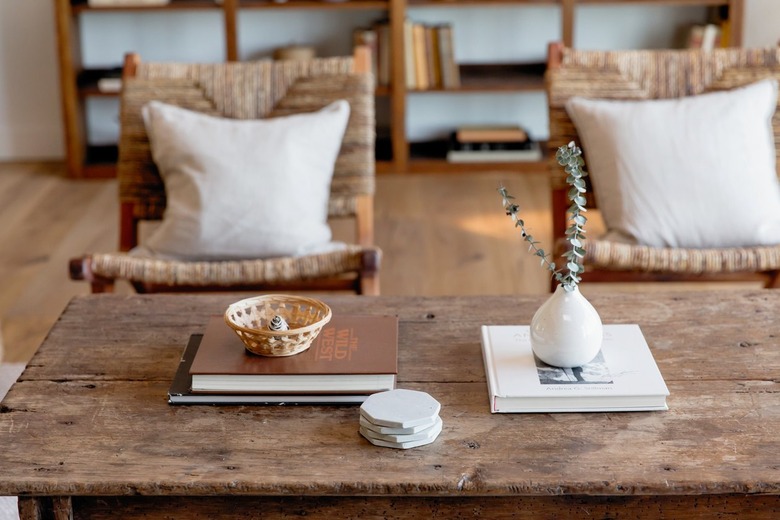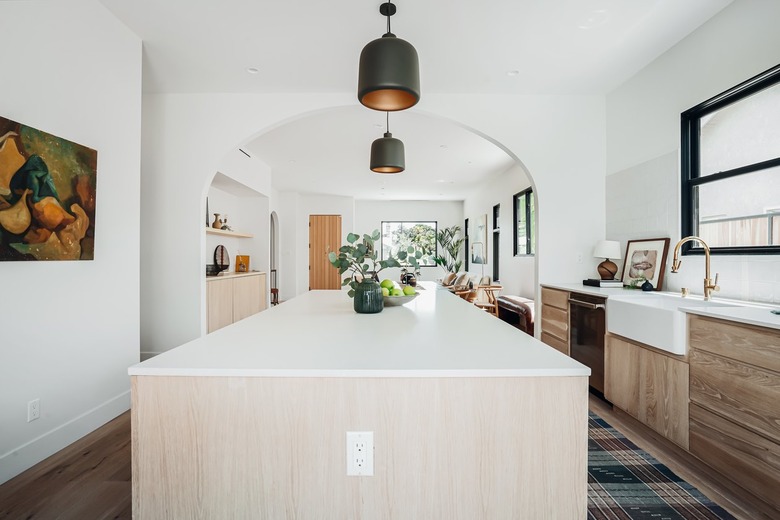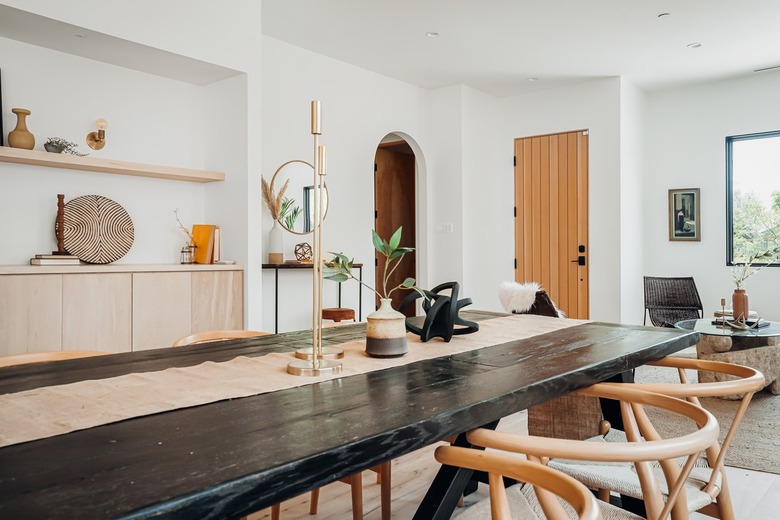How To Design A Slow Living-Inspired Space Where You Can Be Present
We may receive a commission on purchases made from links.
The slow living trend focuses on prioritizing the absolute essentials in life — choosing intentionality and peace over busyness, putting life before work, and finding presentness in your daily life.
People who embrace the slow living movement often talk about downshifting, which looks different for everyone, but can be summed up as the act of gradually eliminating over-indulgence in material items (moving toward sustainability) along with jobs and activities that prevent joy and peace of mind. It's not exactly the same as simple living, which is all about minimalism. Rather, slow loving is about honing in on what matters most in your life — and in your home.
Where did slow living begin?
Where did slow living begin?
There's no one starting point for slow living. Instead, it's a gradual reaction against everything from the effects of capitalism and the industrial revolution to our obsession with social media and hustle culture. It was practiced before it was given a name.
It does have roots in Italy's slow food movement, however, which was born in the 1980s as a response to fast food culture. Led by Carlo Petrini, this group of activists believed that local foods and traditions, eating for pleasure, and a slower pace of life were key.
Slow living also has a lot of cousins. The Japanese have ikigai (a reason for living), the Italians have il dolce far niente (sweetness of doing nothing), the Danes have hygge (seeking cozy comfort), and the Dutch have niksen (the art of doing nothing). Though slightly different and each untranslatable, these movements tell us one thing: People are hungry for rest and comfort.
What "slow" actually means:
What "slow" actually means:
Carl Honore, author of In Praise of Slowness: Challenging the Cult of Speed, writes, "Fast is busy, controlling, aggressive, hurried, analytical, stressed, superficial, impatient, active, quantity-over-quality." Slow, on the other hand, is the opposite, focusing on quality over quantity and meaningful connections with everything around you.
Writer and slow living advocate Alyson Morgan at @alysonsimplygrows says on Instagram that, for her, slow living simply means "spending our precious hours on this earth doing what feels right, not giving into the 'shoulds,' nourishing my inner self with time spent in solitude, opening up to new community, expanding my experience, and grounding in the rhythms of the earth."
So, is this a movement for sloths? Luckily, no! "The paradox is that slow does not always mean slow," Honore writes. "The slow philosophy can be summed up in a single word: balance. Be fast when it makes sense to be fast, and be slow when slowness is called for. Seek to live with what musicians call the tempo giusto — the right speed."
Is slow living realistic?
Is slow living realistic?
A worthy concern: Some slow living critics say the movement is unrealistic. For example, not everyone can just quit their nine-to-five in pursuit of a slower life. However, some nine-to-fivers do say slow living is doable with a commitment to boundaries, rest, and routine.
Plus, the movement is only getting more popular. According to Think With Google, interest in the term blew up during the pandemic. In fact, 2020 saw four times the number of views on slow living videos than 2019. Unsurprisingly, this is when many of us had a lot more time to search the internet and tend to our lives in a slower, more intentional way at home.
Slow living at home:
Slow living at home:
What better place to start implementing a slow living lifestyle than at home? You'll want to be intentional about creating spaces in your home that help you prioritize rest, comfort, and pleasure. While slow living isn't just about Instagrammable, neutral, minimalist aesthetics or buying a bunch of cute things for your house, there are some items you can integrate to make your slow living life easier. And if you can't afford sustainable or artisanal goods, that's okay. You do you.
Here are some ways you can easily adopt slow living at home:
1. Make your kitchen functional and inviting.
1. Make your kitchen functional and inviting.
Because the slow living movement has roots in the slow food movement, creating a kitchen space that allows you to cook, clean, and enjoy beautiful food is key. Your kitchen should be a sanctuary, a place to nourish your soul. You don't need to have a large or state-of-the-art kitchen to achieve this, but you'll want to declutter your cooking space and rid it of any distractions (like that TV or iPad you watch while cooking and eating). Slow living is all about the art of preparing food and being present while you eat it, savoring every bite.
A few ideas? Make sure you've got a durable and eco-friendly cutting board and everything you need to prepare food, like this cutlery set or this utensil set.
If you really want to connect with your food, grow it! This vertical, hydroponic Farmstand is self-watering and self-fertilizing. It grows everything from leafy greens and herbs to tomatoes and eggplant. Be sure to also invest in a tea set, like this Fors Studio Small Tea Set, as tea-making is both ritualistic and meditative.
2. Create spaces for rest & relaxation.
2. Create spaces for rest & relaxation.
Local Milk, a journal devoted to home cookery, travel, family, and slow living, says, "Our homes are our sanctuaries: spaces where we are free to be ourselves and where we can find peace and solace." Ideally, these spaces should be for actual rest — not for scrolling through your feed, since slow living is also largely about renegotiating our relationship to technology and social media.
Create a nook that you use simply for rest and renewal, where you can take a nap, daydream, meditate, read a book, or simply enjoy the soft feel of the blanket beneath you. Consider cozying up with planet and socially conscious and artisan-made goods, which are longer-lasting and more sustainable than mass-produced goods. Some ideas: this Bulgarian Wool Blanket or this Sheepskin Cushion Cover.
Perhaps you arrange this cozy space beside the window or in a soft armchair adorned with calming colors and dreamy textures. Maybe it's surrounded by candles (like this vegan, soy candle from Public Goods) and plants or books.
3. Emphasize the things you love.
3. Emphasize the things you love.
Your home should be a place where you can take pleasure in the things you truly love. If that means reading, tend to your bookshelves with intentionality or hang floating bookshelves throughout your space. If that means movement or meditation, create a space where you can stretch and dance and get comfortable. Maybe it means creativity and crafts; if so, can you create a small space or storage cart where you can easily reach for your art supplies?
4. Build spaces for human connection.
4. Build spaces for human connection.
The slow living movement is all about going deeper with our connections — to food, self, the planet, and each other. If you want to host more family gatherings or make food for guests, find ways to make space for them. Think a long communal table for group dinners, soft lounge chairs, and comfy rugs for long chats and hangouts.
You might even consider separating your hangout space from your TV-watching space. As Nina from Local Milk writes, "If spending more quality time with our loved ones without screens is a priority, we can consider moving the TV into a separate space so that we choose to watch it more mindfully (or not at all)."
In the end, slow living doesn't mean copy-pasting the neutrals-only living room set you found on Instagram into your own home. It means honoring your own values, principles, and tastes when designing a home (and a life!).



